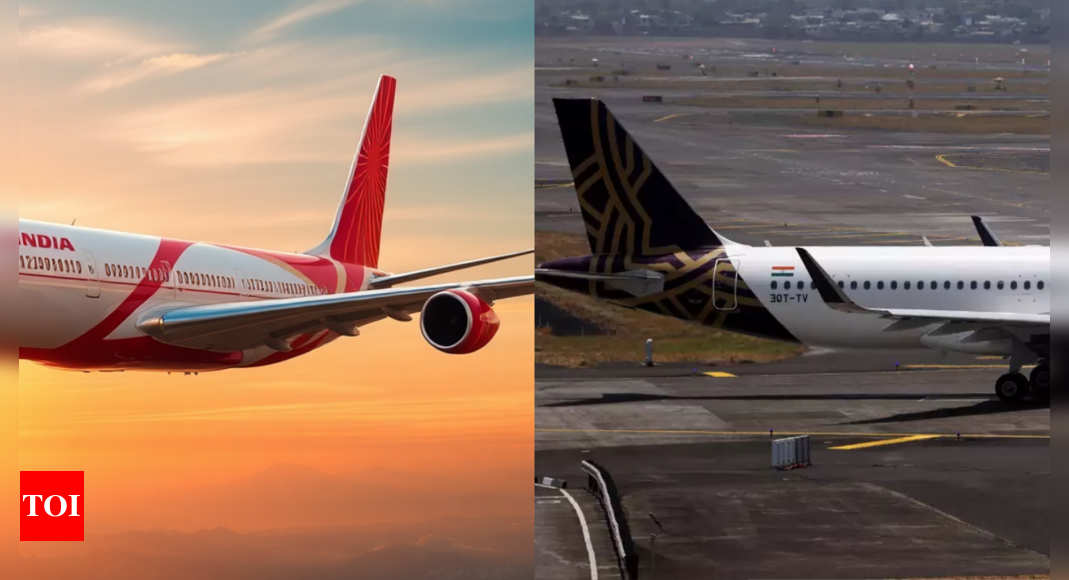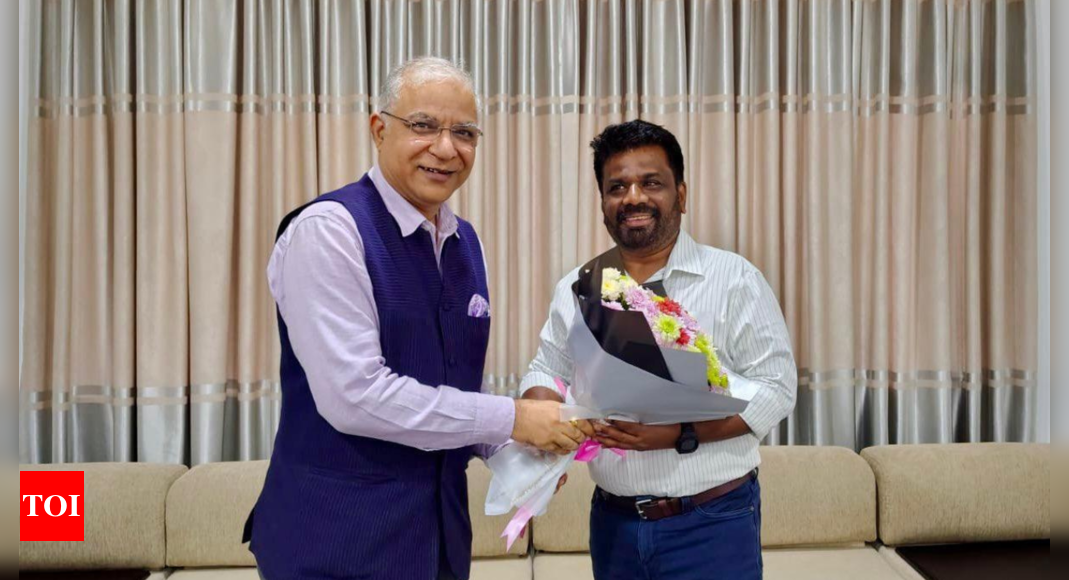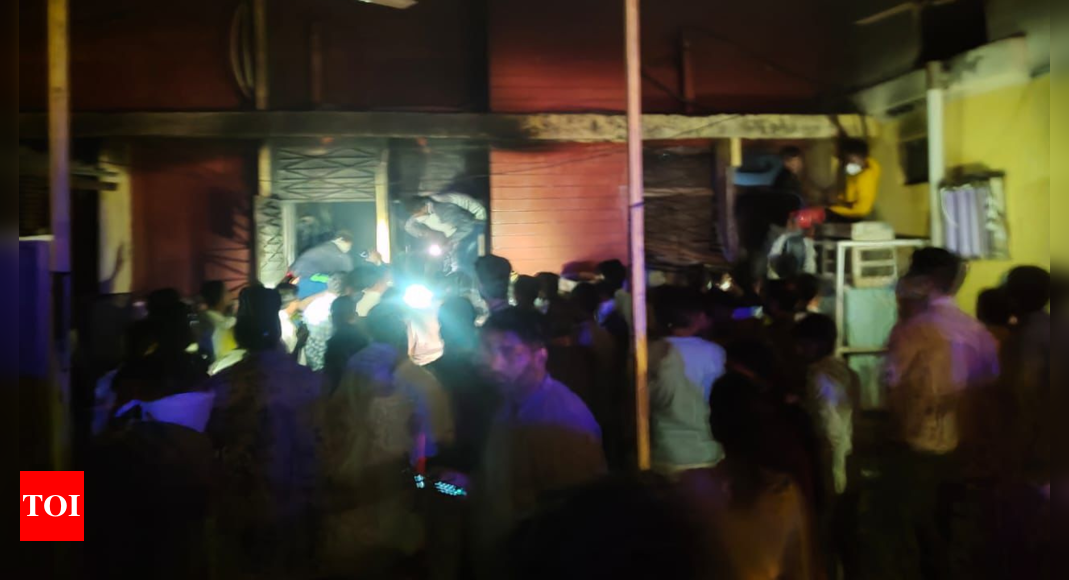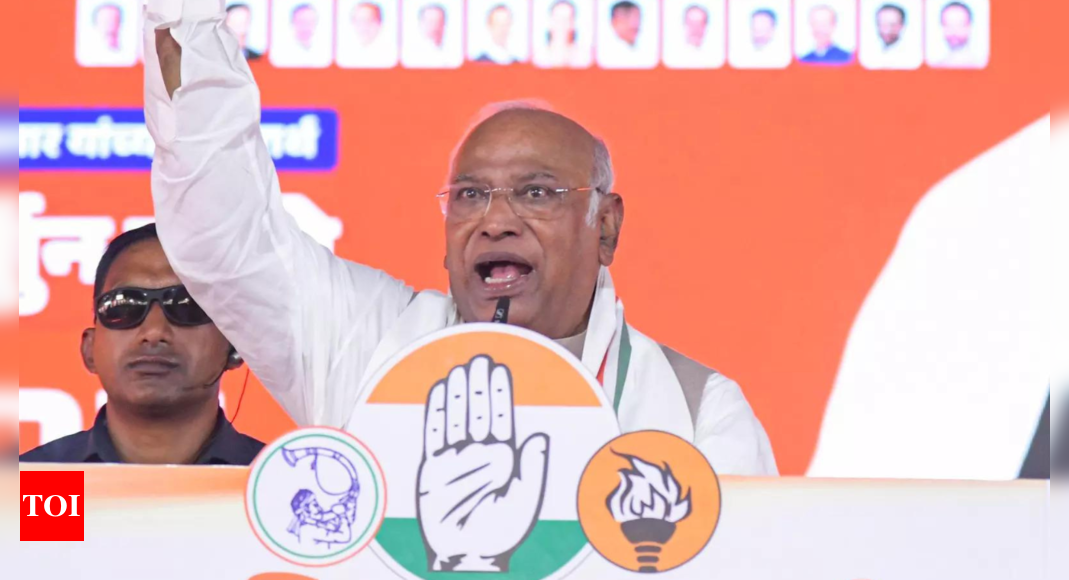
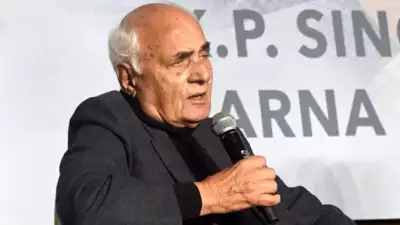
K P Singh, the chairman emeritus of DLF, retains a razor-sharp memory. Sitting under a massive MF Hussain painting at his Lutyens Delhi home, the 95-year-old former Army officer, who turned around the fortunes of DLF, a company set up by his father-in-law, remembers and rues why Gurgaon — except Phase V — has not turned out the way it was envisaged.
Given the massive economic growth India is witnessing, he calls for “thinking big” to create a Chicago-sized city in India every year. The man, who did not have funds when he started building Gurgaon, says govts acquiring and auctioning land the Noida way for infra development and urbanisation is the only way going forward. He spoke to TOI ahead of the launch of his co-authored biography, which was released on Thursday. Excerpts:
Gurgaon is seen as an example of urban failure. It didn’t turn out to be as you had imagined. Can the problems there be fixed?
Gurgaon was not envisaged as it has come out to be. It was supposed to be a high grade, green city. There was to be a green buffer between the two cities to stop urban sprawl. DLF had offered to make a 16-lane world class highway on govt land and hand it free of cost to them. In return, we were to be allowed to plan Gurgaon as it was envisaged to be. Alas, both did not happen. But in phase V, we could get what we wanted and the development is very different and good. That is a good example of what is required. The past can’t be undone.
Roads need to be wider and single or double tier, like Bangkok. I am amazed why Delhi-Gurgaon road is not elevated. I just read a report (by TOI) about the commute from Delhi to Gurgaon being longer than a flight from Delhi to Mumbai.
What ails urbanisation in India, given the state of our cities?
Urbanisation is not among the sectors of the economy we are today proud of like industry, medicine or education. The fundamental defect in India is that the entire master planning is wrong. And it became wrong after 1958. The dictum then was to think small, manage shortages. So, industries had licences, output had a ceiling. Urban development suffers from a small-scale mindset. We need to think big and create surpluses.
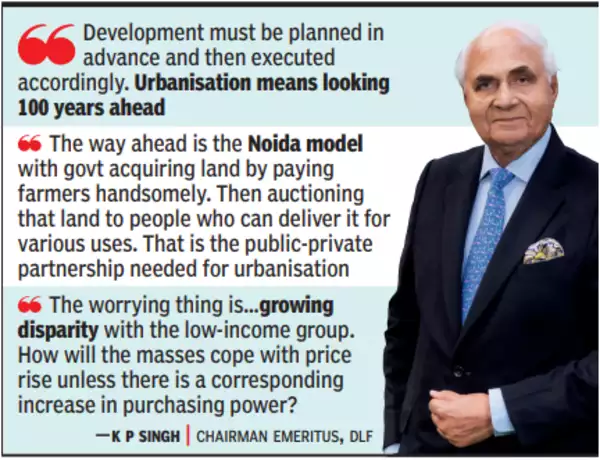
Why have 12 metre roads and not 30- or 40-metre roads? There’s no dearth of land in India. Master planning is not what a bureaucrat or somebody wants it to be. It must be done by visionaries who cater for the future and factor in the massive economic development taking place. Faster growth will mean more migration to cities. Any urban area that is not developed will get slums and unauthorised homes, as we have seen. Development must be planned in advance and then executed accordingly. Urbanisation means looking 100 years ahead.
What is the way ahead?
Government is well meaning. We have a very fine leadership in PM Modi who is not a talker, but a doer. He will revamp the entire urban infrastructure, just as highways have been built in the hinterlands. India needs more cities. After Gurgaon, not one city has come up. A Lavasa was planned (near Mumbai) but that failed. The way ahead is the Noida model with govt acquiring land by paying farmers handsomely. Then auctioning that land to people who can deliver it for various uses. That is the public-private partnership needed for urbanisation.
Do you think another Gurgaon can be created today?
No, I do not believe this kind of development can happen again. You have to be born again with the same (zeal). If I were affluent at that time (1980s, when he was building Gurgaon), I could not have done it. I had no money. Someone asked me at that time what are you doing, and I told him whatever we are doing, we are zero only and can’t become double zero. It’s takht or taaj (crown if we win, nothing if we don’t).
We won the trust and confidence of farmers. We won over people’s trust by working with ethics, moral values and always sharing prosperity with those who do business with us. I’m very happy, my son followed me to the hilt. Now, the fourth generation is doing the same.
I don’t think anybody can acquire land. Has anything been done after we started in the 1980s? Haryana is the only state that did not adopt land ceiling regulations. Developers had to acquire land directly from farmers and that had its own challenges like fragmented ownership, titles not being clear. Urban land is a complicated business.
Given how real estate prices have moved, is it a bubble waiting to burst?
Price depends on supply and demand. Prices show people are becoming prosperous. Cost of land and infrastructure is rising. So, prices will only rise. Real estate is not a balloon waiting to burst. The worrying thing is different. And that is growing disparity with the low-income group. How will the masses cope with price rise unless there is a corresponding increase in purchasing power? The important thing is people need to be able to afford the higher prices.



